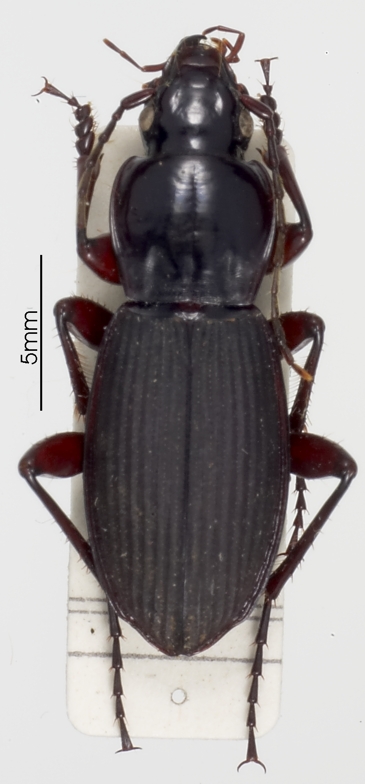|
Notonomus Gravis
''Notonomus gravis'' is a species of ground beetle in the subfamily Pterostichinae. It was described by Maximilien Chaudoir in 1865. References Notonomus Beetles described in 1865 Taxa named by Maximilien Chaudoir {{Notonomus-stub ... [...More Info...] [...Related Items...] OR: [Wikipedia] [Google] [Baidu] |
Maximilien Chaudoir
Maximilien Chaudoir, or Maximilien, baron de Chaudoir, (12 September 1816, Ivnitsa, near Zhitomir – 6 May 1881, Amélie-les-Bains) was a Russian entomologist. He was a specialist in Coleoptera and in particular the Carabidae. His Cicindelidae are conserved by the Muséum national d'histoire naturelle in Paris. His Carabidae were acquired by Charles Oberthür (1845–1924), then given to the same museum. He wrote ''Mémoire sur la famille des Carabiques'', 6 volumes commencing 1848. Life and work Chaudoir was born in Ivnitza, about 30 kilometres from Jitomir, Ukraine. The family may come from a line of French Protestant emigrants who fled in 1685 or from Belgium. The subsequent roots have been traced to Antoine de Chaudoire from Poland whose son worked in the court of Stanislas-Auguste Poniatowski until his abdication in 1795, after which he moved to Bavaria where he received the hereditary title of Baron from Maximilien Joseph II in 1814. His son Stanislav (1790–1858) marrie ... [...More Info...] [...Related Items...] OR: [Wikipedia] [Google] [Baidu] |
Ground Beetle
Ground beetles are a large, cosmopolitan distribution, cosmopolitan family (biology), family of beetles, the Carabidae, with more than 40,000 species worldwide, around 2,000 of which are found in North America and 2,700 in Europe. As of 2015, it is one of the 10 most species-rich animal families. They belong to the Adephaga. Members of the family are primarily carnivorous, but some members are phytophagous or omnivorous. Description and ecology Although their body shapes and coloring vary somewhat, most are shiny black or metallic and have ridged wing covers (elytra). The elytra are fused in some species, particularly the large Carabinae, rendering the beetles unable to fly. The species ''Mormolyce phyllodes'' is known as violin beetle due to their peculiarly shaped elytra. All carabids except the quite primitive flanged bombardier beetles (Paussinae) have a groove on their arthropod leg, fore leg tibiae bearing a comb of hairs used for cleaning their antenna (biology), antennae. ... [...More Info...] [...Related Items...] OR: [Wikipedia] [Google] [Baidu] |
Pterostichinae
Pterostichinae is a subfamily of ground beetles (family Carabidae). It belongs to the advanced harpaline assemblage, and if these are circumscribed ''sensu lato'' as a single subfamily, Pterostichinae are downranked to a tribe Pterostichini. However, as the former Pterostichitae supertribe of the Harpalinae as loosely circumscribed does seem to constitute a lineage rather distinct from '' Harpalus'', its core group is here considered to be the present subfamily and the Harpalinae are defined more narrowly. They are usually mid-sized and rather stout ground beetles. Coloration is typically dark and without conspicuous patterns, but often with a strong sheen like polished metal. They are widely distributed and inhabit a wide range of terrestrial habitats. Unlike the more basal ground beetles which only eat small animals, the Pterostichinae include a large proportion of omnivorous or even herbivorous taxa. Systematics This group includes the following tribes and genera: Tribe A ... [...More Info...] [...Related Items...] OR: [Wikipedia] [Google] [Baidu] |
Notonomus
''Notonomus'' is a genus of ground beetles in the family Carabidae. There are more than 120 described species in ''Notonomus'', found in Australia. Species These 127 species belong to the genus ''Notonomus'': ; Subgenus Acanthoferonia B.Moore, 1965 : '' Notonomus ferox'' (B.Moore, 1965) ; Subgenus Conchitella B.Moore, 1962 : '' Notonomus clivinoides'' (B.Moore, 1962) ; Subgenus Leiradira Laporte, 1867 : '' Notonomus alternans'' (Darlington, 1953) : '' Notonomus alticola'' (Darlington, 1961) : '' Notonomus auricollis'' (Laporte, 1867) : '' Notonomus aurifer'' (Darlington, 1961) : '' Notonomus barrae'' Will, 2015 : '' Notonomus dimorphicus'' Darlington, 1961 : '' Notonomus flos'' Darlington, 1961 : '' Notonomus iridescens'' Will, 2015 : '' Notonomus jacobi'' (Darlington, 1961) : '' Notonomus latreillei'' (Laporte, 1867) : '' Notonomus opacistriatis'' Sloane, 1902 : '' Notonomus puella'' (Tschitscherine, 1898) : '' Notonomus smilodon'' Will, 2015 : '' Notonomus soror'' (Darling ... [...More Info...] [...Related Items...] OR: [Wikipedia] [Google] [Baidu] |
Beetles Described In 1865
Beetles are insects that form the order Coleoptera (), in the superorder Endopterygota. Their front pair of wings are hardened into wing-cases, elytra, distinguishing them from most other insects. The Coleoptera, with about 400,000 described species, is the largest of all orders, constituting almost 40% of described insects and 25% of all known animal life-forms; new species are discovered frequently, with estimates suggesting that there are between 0.9 and 2.1 million total species. Found in almost every habitat except the sea and the polar regions, they interact with their ecosystems in several ways: beetles often feed on plants and fungi, break down animal and plant debris, and eat other invertebrates. Some species are serious agricultural pests, such as the Colorado potato beetle, while others such as Coccinellidae (ladybirds or ladybugs) eat aphids, scale insects, thrips, and other plant-sucking insects that damage crops. Beetles typically have a particularly hard exoske ... [...More Info...] [...Related Items...] OR: [Wikipedia] [Google] [Baidu] |



